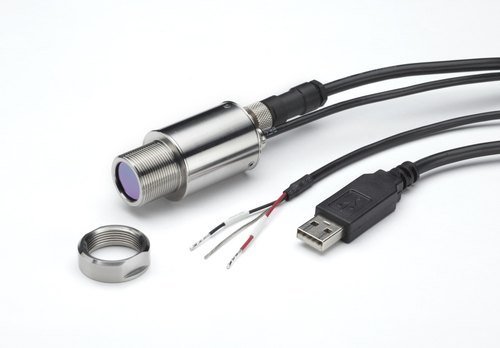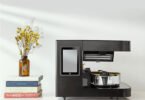Without making direct touch with the surface, a non-contact infrared temperature sensor measures the surface temperature of an object. Devices from Tempsens, including infrared thermometers, infrared cameras, and industrial furnace monitoring cameras, are available in single-point and area inspection model configurations.
Non-contact Measurement Benefits
● measuring moving, difficult-to-reach, or extremely hot things
● exceptionally rapid measurement and reaction times
● Damage-free measurement
● No damage
● Possibility to measure also in electromagnetic fields, high voltages or hostile materials
Pyrometers
Regarding energy management, productivity, and product quality, temperature measurement and control in industrial processes are crucial. Contact-type sensors, such as thermocouples and resistance temperature detectors, can be used to measure a variety of temperatures. However, if the measurement requires a quick reaction, doesn’t affect temperatures or materials, measures moving items, hard-to-reach objects, objects that carry electricity, small objects, or aggressive materials like corrosive and molten metals. The ideal solution is a non-contact infrared temperature sensor. Radiation is produced by every item whose temperature is greater than absolute zero (-273.15 °C). This emission, which is heat radiation, is temperature-dependent. Energy is transported by infrared radiation. This energy is radiated, and it is used to calculate a body’s temperature. Being a member of a highly specific field of measuring procedures, pyrometry has taken on a somewhat enigmatic air.
Thermal Imagers
Thermal imagers are tools that pick up infrared energy that is emitted and reflected by objects, then turn that energy into a thermogram. When using a thermal imager, a non-contact infrared temperature sensor instead of a spot infrared thermometer, the region under surveillance grows because we are now viewing hundreds or thousands of spots, which offers us more knowledge about potential failure, if any. These are the greatest tools for use in situations where things are moving over long distances, and the temperature is rather high.
Furnace Monitoring Cameras
The furnace monitoring system offers a wide-angle view of the interior of the combustion chamber, including the burner flames, material alignment and movement, and other operations. The TFV-750/1100 and TE-750/1100 thermal view systems are positioned on the wall’s furnace. It consists of a pneumatic control system and an automatic retraction and insertion system that is controlled by a control cabinet with a PLC.
Substation Monitoring System
This non-contact infrared temperature sensor has a variety of electrical components, including surge or lightning protection, circuit breakers, current transformers, and power transformers. Hot spots are produced by this equipment as a result of excessive voltage or current. The entire substation may break down as a result of this. By employing a thermal camera, early warnings of the hotspot area and avert blackouts or power outages can be made. The SparkView system is useful for substation monitoring around-the-clock.
Flare Stack Monitoring System
Due to the environmental and health risks, hazardous gases produced by petrochemical and some other sectors cannot be released directly into the atmosphere. These gases must be burned before entering the atmosphere. To achieve this, chimneys are equipped with burners that continuously burn these dangerous gases. And because this process is essential for nature, authorities and environmental agencies enforce strict laws that require constant monitoring, troubleshooting, and monitoring of equipment and other means to ensure the system works properly. Various fire detection methods are used in industry, such as thermal imaging, pyrometers, and thermocouples. The best and most effective method for monitoring flare stacks is thermal imaging as a non-contact infrared temperature sensor since it can monitor the flame from a distance without coming in contact with it directly, and it also has the added advantage of allowing you to see the flame from the control room.
Earlier, only the flame’s detection was necessary for this application, but more recently, because of improved safety procedures and governmental laws, the flame’s temperature is also monitored. Unless the flame is at or above a certain temperature, some of these dangerous gases are not entirely burned. The pilot flame and main flame are both accurately detected by thermal imaging as non-contact infrared temperature sensor systems, which additionally test the flame’s temperature continuously to make sure that the gases are entirely burned off.






